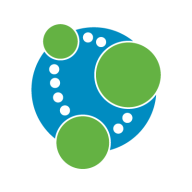

MongoDB Enterprise Advanced and Neo4j AuraDB are products in the database management system market. Neo4j AuraDB often gains an edge in graph database applications due to its specialization.
Features: MongoDB Enterprise Advanced offers a document-based model, comprehensive replication and sharding, and robust security features. Neo4j AuraDB specializes in graph databases, providing native graph capabilities, parallelized performance, and seamless graph algorithms.
Room for Improvement: MongoDB Enterprise Advanced could enhance its ease of deployment and reduce administrative overhead. It might simplify integration with graph data structures. Neo4j AuraDB could benefit from expanding functionalities beyond graph-related features and improve the customization options for complex environments. It may also improve customer documentation.
Ease of Deployment and Customer Service: Neo4j AuraDB provides a fully automated cloud deployment model, which speeds up time to market. MongoDB Enterprise Advanced offers more customization but may require more administrative efforts. MongoDB's customer service is comprehensive, while Neo4j provides specialized support for graph database requirements.
Pricing and ROI: MongoDB Enterprise Advanced involves a higher initial cost but offers long-term ROI through its versatility and support. Neo4j AuraDB’s scalable cloud model generally results in lower initial costs and quicker ROI for graph-intensive applications, with its pricing model aligning with specialized graph solutions.


MongoDB Enterprise Advanced is a comprehensive platform renowned for its scalability, user-friendliness, and high performance, underpinned by its flexible document-based storage and open-source model. JSON compatibility, clustering, and security elevate its standing among professionals.
The platform facilitates efficient data management through developer-friendly tools and a strong aggregation framework. MongoDB’s no-schema requirement, supported by community expertise, underlines its adaptability. While its sharding capabilities and affordably support large data volumes, there are aspects such as security enhancement and enterprise tool integration that need attention. Indexing and query optimization pose challenges, alongside high costs. Improvements in analytics and UI could advance its infrastructure further.
What are the key features of MongoDB Enterprise Advanced?Industries leverage MongoDB Enterprise Advanced for significant roles in data storage within IoT platforms, healthcare apps, public service monitoring, and big data analytics. Companies in logistics and telecommunications find it instrumental for business process management and video content management, benefiting from its seamless integration and unstructured data support.
Neo4j AuraDB offers seamless integration with Python, Java, and Go, efficiently handles real-time data, and is hosted on AWS Cloud for reliable, scalable, and multi-cloud support across GCP, Azure, and Amazon.
Neo4j AuraDB is appreciated for its flexible data models and dedicated query language, ideal for network correlation and graph analysis. It provides scalability with expanded memory and supports multiple databases. While users enjoy its speed and AI data handling capabilities, challenges include stability, with occasional crashes and a need for a more intuitive cloud interface. Enhancements in simplifying the development process and improving the Bloom interface for large datasets are desired. Although documentation is positive, it could be streamlined. Scalability in large projects is a recurring concern alongside a more user-friendly setup for less experienced teams.
What are Neo4j AuraDB's standout features?Research teams use Neo4j AuraDB to learn cipher language and gather data from platforms like Hacker News. It is vital for graph data access, participant engagement, and projects like connecting food data or investment insights. Companies needing scalable cloud interfaces and swift data analysis in generative AI contexts benefit significantly, achieving effective data point connection with robust documentation.
We monitor all Managed NoSQL Databases reviews to prevent fraudulent reviews and keep review quality high. We do not post reviews by company employees or direct competitors. We validate each review for authenticity via cross-reference with LinkedIn, and personal follow-up with the reviewer when necessary.